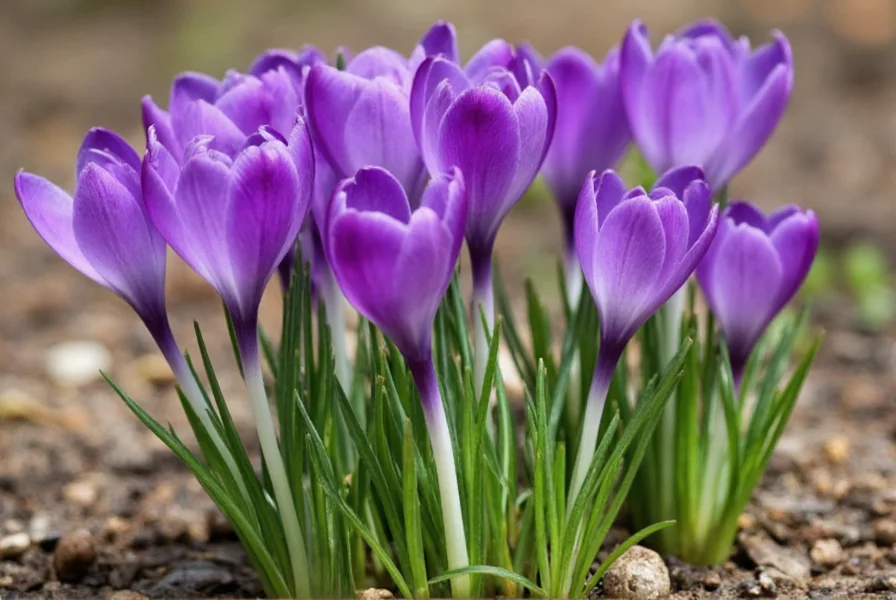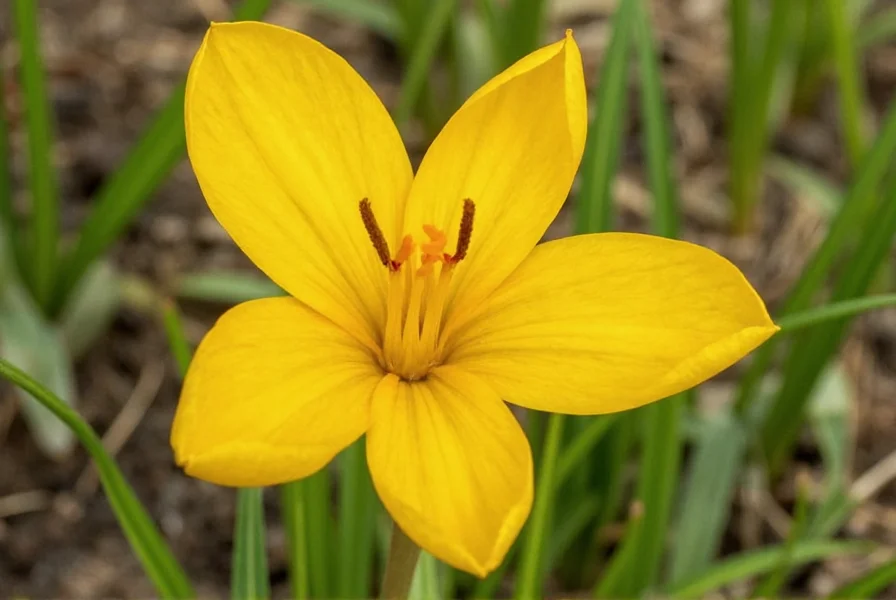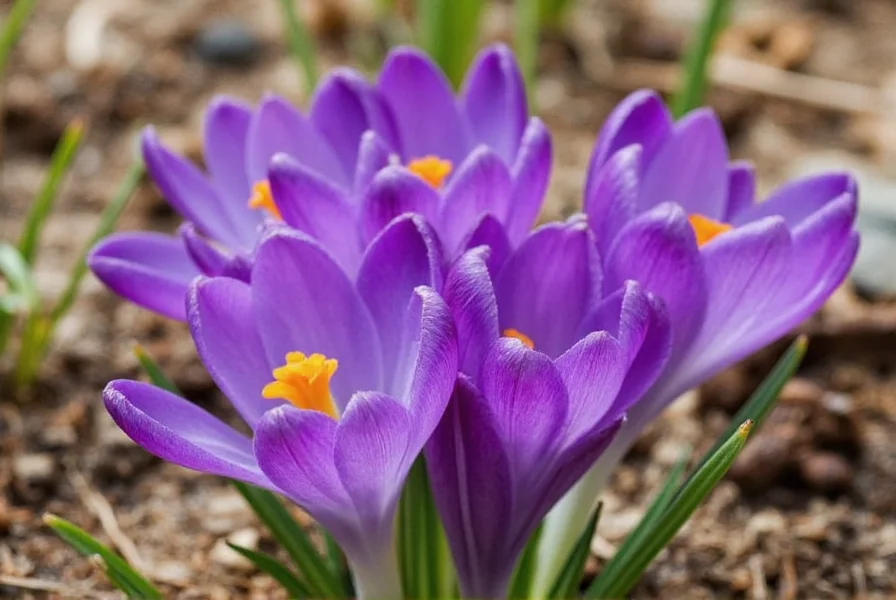The saffron crocus, scientifically known as Crocus sativus, stands as one of agriculture's most labor-intensive crops. This autumn-blooming perennial belongs to the Iridaceae family and produces the prized saffron spice from its vivid crimson stigmas. What makes this plant extraordinary is that it's a sterile triploid with three sets of chromosomes, rendering it incapable of producing viable seeds. Instead, it propagates exclusively through manual division of its underground corms.
Botanical Characteristics of Crocus sativus
Measuring 15-25 cm in height, the saffron crocus features narrow, grass-like leaves with a central white stripe. Its most distinctive feature is the purple-violet flower that blooms for just one week each autumn. Each flower contains three bright red stigmas that extend from the yellow style, which when carefully harvested and dried, become the saffron threads used in cooking and traditional medicine.
| Characteristic | Description |
|---|---|
| Scientific Name | Crocus sativus |
| Plant Type | Perennial corm |
| Flowering Season | Autumn (October-November) |
| Stigmas per Flower | 3 red threads |
| Flowers per Kilogram Saffron | Approximately 150,000 |
Historical Origins and Cultivation Regions
Believed to have originated in Southwest Asia, the saffron crocus has been cultivated for over 3,500 years. Ancient civilizations from Mesopotamia to Greece prized it for dyeing, medicine, and culinary uses. Today, Iran produces about 90% of the world's saffron, followed by smaller operations in Spain, India, Greece, and Morocco. The plant thrives in regions with hot, dry summers and cold winters—a climate pattern known as Mediterranean with continental influences.
The Labor-Intensive Harvesting Process
Saffron harvesting represents one of agriculture's most meticulous processes. Flowers must be picked early in the morning when still closed to preserve the delicate stigmas. Harvesters then carefully remove the three red stigmas from each flower by hand—a task requiring precision to avoid damaging the fragile threads. These stigmas undergo immediate drying to preserve their color, flavor, and aroma compounds, primarily crocin, picrocrocin, and safranal.
The extraordinary labor requirements explain why saffron remains the world's most expensive spice by weight. It takes approximately 40 hours of labor to harvest and process enough flowers for just one ounce of dried saffron. This intensive process directly contributes to saffron's high market value, typically ranging from $5,000 to $10,000 per kilogram.
Optimal Growing Conditions for Saffron Crocus
Successful saffron cultivation requires specific environmental conditions. The plant prefers well-drained, calcareous soils with a pH between 6 and 8. While it tolerates temperatures from -15°C to 40°C, the ideal growing climate features hot, dry summers for dormancy and cool, moist autumns for flowering. Regions with significant temperature fluctuations between day and night during flowering season produce the highest quality saffron.
When considering how to grow saffron crocus commercially or in home gardens, proper planting depth proves critical. Corms should be planted 15-20 cm deep in late summer, with spacing of 10-15 cm between plants. The first flowers typically appear one year after planting, with peak production occurring in the third through fifth years.

Common Challenges in Saffron Production
Growing saffron crocus presents several challenges that impact yield and quality. The most significant threat comes from unpredictable autumn rainfall, which can damage flowers before harvest. Fungal diseases like corm rot can devastate crops if soil drainage proves inadequate. Additionally, the narrow harvesting window—typically just one week per season—creates immense pressure to complete the labor-intensive collection process quickly.
For home gardeners interested in saffron crocus care instructions, the primary challenge involves creating the right microclimate. In regions without ideal Mediterranean conditions, growers must carefully manage irrigation and provide winter protection while ensuring proper summer dormancy. Container growing offers more control over soil conditions but requires careful monitoring of moisture levels.
Differences Between Saffron Crocus and Other Crocus Varieties
While many crocus species bloom in spring, the saffron crocus uniquely flowers in autumn. Unlike wild crocus varieties that reproduce through seeds, Crocus sativus requires human intervention for propagation. Most importantly, only saffron crocus produces the distinctive red stigmas used for saffron spice—other crocus species contain yellow stigmas with no culinary value.
Understanding the saffron harvesting process reveals why this particular crocus variety commands such high value. The combination of seasonal limitations, manual labor requirements, and low yield per plant creates a perfect storm of factors that maintain saffron's position as the world's most expensive spice.

Economic Impact of Saffron Cultivation
Saffron production provides critical economic support for rural communities in producing regions. In Iran's Khorasan province, for example, saffron farming employs over 300,000 families. The high value-to-weight ratio makes saffron particularly valuable for small-scale farmers, as even modest plots can generate significant income. However, the labor-intensive nature of production creates challenges for scaling operations while maintaining quality standards.
Practical Tips for Home Saffron Cultivation
For gardeners interested in growing saffron at home, start with high-quality corms from reputable suppliers. Plant them in full sun locations with excellent drainage—raised beds work well in areas with heavy rainfall. Water sparingly after planting, then increase moisture as flowering approaches in autumn. Remember that patience proves essential, as first-year yields will be modest compared to established plantings.
When harvesting saffron crocus flowers, use clean hands or tweezers to gently remove the red stigmas without damaging the yellow style. Dry the threads immediately on a mesh screen in a warm, dark place with good air circulation. Properly dried saffron should feel brittle and retain its deep red color.
Conclusion
The saffron crocus represents a remarkable intersection of botany, agriculture, and human tradition. Its unique biological characteristics, combined with the intensive labor required for harvesting, explain why saffron maintains its status as the world's most expensive spice. Whether you're considering commercial production or simply growing saffron crocus in your garden, understanding the plant's specific needs and the meticulous harvesting process provides valuable context for appreciating this extraordinary botanical treasure.
Frequently Asked Questions
How long does it take for saffron crocus to flower after planting?
Saffron crocus typically flowers 6-8 weeks after planting in late summer. The first blooms usually appear in autumn of the same year, though initial yields will be modest. Maximum production occurs during the plant's third to fifth year when the corm colony has sufficiently multiplied.
Can you grow saffron crocus in containers?
Yes, saffron crocus grows well in containers with proper drainage. Use pots at least 20 cm deep filled with sandy, well-draining soil. Container growing allows better control of soil conditions and makes it easier to protect plants from excessive moisture. Remember to bring containers indoors during heavy autumn rains to prevent flower damage.
Why is saffron so expensive compared to other spices?
Saffron's high cost stems from its extremely labor-intensive harvesting process. Each flower produces only three stigmas, requiring approximately 150,000 flowers to yield one kilogram of dried saffron. The narrow harvesting window, manual collection, and immediate drying requirements all contribute to saffron's premium price, which typically ranges from $5,000 to $10,000 per kilogram.
What's the difference between saffron crocus and meadow saffron?
Saffron crocus (Crocus sativus) produces the valuable saffron spice from its red stigmas and blooms in autumn. Meadow saffron (Colchicum autumnale), despite its name, isn't a true crocus and is highly toxic. It also blooms in autumn but contains colchicine instead of saffron compounds. Never confuse these plants, as meadow saffron can be deadly if consumed.
How should harvested saffron stigmas be dried and stored?
Spread freshly harvested stigmas in a single layer on a fine mesh screen in a warm (30-35°C), dark, well-ventilated area. Drying typically takes 12-24 hours until threads become brittle. Store dried saffron in an airtight container away from light and moisture. Properly stored saffron maintains its flavor and color for 2-3 years, though peak quality occurs within the first year.











 浙公网安备
33010002000092号
浙公网安备
33010002000092号 浙B2-20120091-4
浙B2-20120091-4